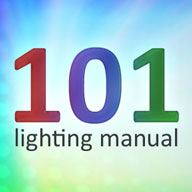milamber79
New elf
- Joined
- Aug 24, 2011
- Messages
- 11
I am new to computer control and would like to use lights that I have already purchased. I have accumulated a number of sets over the years and surprisingly they are all in working order still. All but 1 of my sets are 24v, so I assume that because they are all rated the same I could use 1 powersupply to run them all. They are a mixture of incandescent and LED.
So I have a couple of questions about that. I would like to run these on DC and use Mosfets to switch them. I am looking at using an Arduino as a controller (If that matters).
Will these work with just a 24v DC power supply or will I need a higher/lower voltage? If there is a voltage change needed how do I work that out or is there a rule of thumb for this?
I understand that I will need a supply capable of enough current to drive the strings so I am looking at a 400W supply. But the exact one will depend on the above question.
Secondly, when the strings have multiple channels (usually different colours), I would like to be able to control each colour group. Are the strings connected as common Positive or common Negative? Or is there no standard and I will need to test each one?
Unfortunately I don't have a large DC powersupply to test these on, otherwise I would just do some empirical testing.
Thanks everyone.
So I have a couple of questions about that. I would like to run these on DC and use Mosfets to switch them. I am looking at using an Arduino as a controller (If that matters).
Will these work with just a 24v DC power supply or will I need a higher/lower voltage? If there is a voltage change needed how do I work that out or is there a rule of thumb for this?
I understand that I will need a supply capable of enough current to drive the strings so I am looking at a 400W supply. But the exact one will depend on the above question.
Secondly, when the strings have multiple channels (usually different colours), I would like to be able to control each colour group. Are the strings connected as common Positive or common Negative? Or is there no standard and I will need to test each one?
Unfortunately I don't have a large DC powersupply to test these on, otherwise I would just do some empirical testing.
Thanks everyone.

